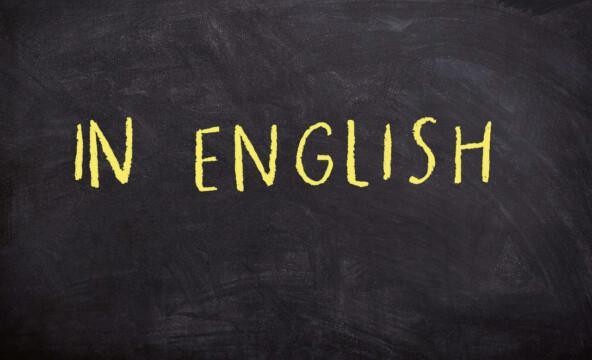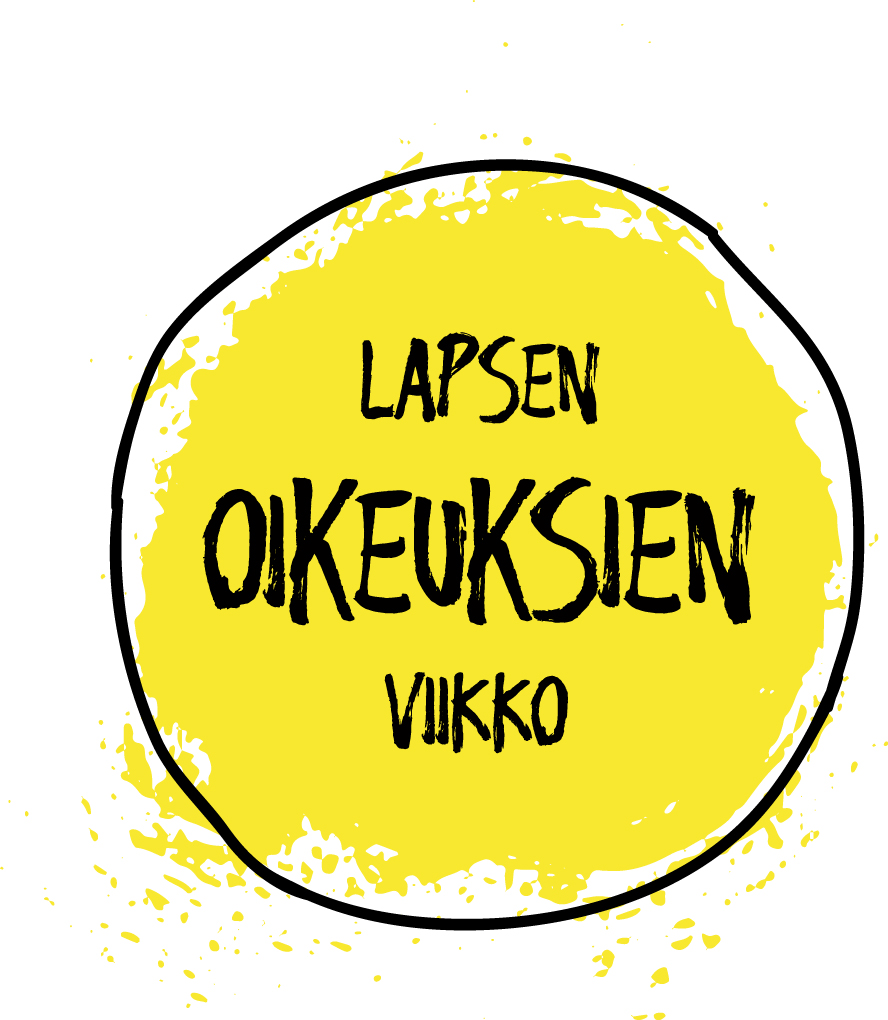Children’s Rights Week in English

Materials for Children's Rights Week in English 2024
Some of the educational material for the Children’s Rights Week has also been translated into English! Explore the Convention on the Rights of the Child and this year’s theme: every child has the right to learn.
You can find more tasks in Finnish and Swedish here:
schools, early childhood education, leisure time and hobbies.
Materials for Children’s Rights Week 2024 in English
The theme for Children’s Rights Week in 2024 is every child’s right to learn. The material does not focus solely on learning that takes place at school, but aims to make children aware of where and how they learn in various environments, to appreciate the joy of learning, and to understand that learning is every child’s right.
The materials can be adapted for children of different ages in grades 1-9. Click the title to learn more:
- What is the Convention on the Rights of the Child? (10–30 min)
- Pair work task: Children’s rights: memory game (10 min)
- Children’s Rights Quiz for adults (10–15 min)
- Discussion: Try this – tips (10–20 min)
- Exercise for pairs or small groups: A news story of the future (45 min or 90 min)
- Video and Discussion: Climate and Children’s Rights (15 min)
You can also have a look at Finnish National Agency for Education’s learning materal (oph.fi) about children’s rights for early childhood education and care, primary school and secondary and upper secondary education. The materials are available in English, Finnish, Swedish, Northern Sámi, Inari Sámi, Skolt Sámi, Estonian, Russian, Somali and Arabic.
What is the Convention on the Rights of the Child?
10–30 minutes
In this activity, the main points of the Convention on the Rights of the Child are reviewed with the students. The key objective is to create an understanding of what the Convention is and why it is so important. The focus is especially on highlighting the four general principles of the Convention using a chart picture. Emphasize the responsibility of adults to ensure that children’s rights are upheld.
Students will also learn about Children’s Rights Week in Finland and Children’s Rights Day, which is celebrated on November 20th each year. Additionally, student will learn of this year’s theme: learning through the 2024 information package for Children’s Rights Week. The package includes questions for discussion in pairs or small groups.
- Children’s Rights Week 2024 information package (pdf)
- Chart picture: Four General Principles (pdf)
- The Convention on the Rights of the Child: The children’s version (unicef.org)
- Unicef UK’s list: Our Rights (pdf)
- Unicef’s video: What are child rights and why are they important? 2.02 min (youtube.com)
Pair work task: Children’s Rights: memory game
10 minutes
This memory game about children’s rights teaches players about the right to learn while exercising their memory.
Exercise:
Divide the class into pairs or groups of three. Give each group a pack of memory cards (pdf). Remember to print out two sets per group.
The task is to match pairs of cards. The memory cards are spread face down on the table or floor. Players take turns to flip two cards face up. When players find a pair of cards, they get to keep them. If the cards that have been flipped face up are not a pair, both are flipped face down again and returned to their original position. It is now the next player’s turn.
The game is over when all the pairs have been found. The winner is the player who has collected the most pairs.
Materials:
- Printable memory cards in English (pdf)
- Printable memory cards in Finnish (pdf)
- Printable memory cards in Swedish (pdf)
Psst! The memory game can also be used for language teaching and as a word explanation game. The cards are available in Finnish, Swedish and English.
Psst psst! You can also make a memory game yourself! Come up with issues related to children’s rights and learning. Each student illustrates one card, of which the teacher makes a digital scan. Images can be moved to a grid using the free Canva software, for example. Print two copies of the grid and cut them into cards.
Children’s Rights Quiz
The teacher explains: In addition to children knowing their own special rights, it is important that every adult also knows what the Convention on the Rights of the Child is and what it entails. In this task, the children act as hosts while adults compete in a quiz about children’s rights.
Task: Print the quiz sheet, or send the file to the students via your chosen learning platform. The correct answers are marked in bold for each question’s answer options on the second page of the pdf.
Materials:
Psst! Besides testing the adults at home, children can also organize the quiz for adults at their school, such as the principal, the cook, the nurse, or others.
Psst psst! Alternatively, the quiz can be conducted by having the children distribute the printed quizzes to the adults without the correct answers.
Discussion: Try this – tips
10–20 minutes
This exercise is intended to help students when they are facing difficulties in learning new things.
The teacher:
Sometimes it can be difficult to learn and practise new things. You may feel that you can’t remember the new thing at all. Learning something new always takes some perseverance – and this applies to adults too.
It is worth remembering that:
- People learn in different ways and at their own pace. We are all unique, even in this respect!
- Practice makes perfect! There are many things that have to be repeated countless times before being committed to memory.
- Did you sleep well? Have you eaten properly? What other thoughts are occupying your mind? All these factors affect your ability to learn and how your brain can cope with new ideas.
- Even when you make mistakes, you’re still learning! Things that seem easy do not necessarily teach you anything new. Don’t be discouraged and give up if something feels difficult – that’s when you’re about to learn something!
- Asking for help is not a sign of not being able to learn! The adults at school and who supervise activities are there for you and are always ready to help and offer advice.
Exercise:
Let’s discuss situations in which learning has been difficult. Let’s collect tips from the class on what to do in these situations. What tips did you come up with?
Write down methods to support learning or practising new things on the board or a sheet of paper. Leave the list for everyone to see. This will be the class’s own list of tips for those situations when learning seems like hard work.
Exercise for pairs or small groups: A news story of the future
45 minutes (90 minutes if also shooting a video)
(e.g. language and literature, history, social studies, health education, guidance counselling)
The purpose of this task is to think about desirable futures in terms of school satisfaction among children and teenagers.
Exercise:
Divide students into pairs or groups of 3–4.
The teacher:
Let’s imagine that we are living in the near future, say five years from now. School satisfaction among young people has improved considerably. What has changed for this to occur?
Write a news story in which you describe factors that have contributed to improving school satisfaction among children and young people in Finland over the past five years.
Discuss:
- What is your dream school like?
- What kinds of decisions or laws have been enacted to make it a reality?
- How are children and young people consulted in matters that concern them?
Psst. You can also turn your news story into a short video, in which you interview children, young people and imaginary experts about the situation.
Video and Discussion: Climate and Children’s Rights
15 minutes
Suitable for grades 7-9.
(social studies, history, biology, religion and ethics, English)
In this task, students explore the latest general comment from the Committee on the Rights of the Child and consider climate issues from the perspective of children’s rights.
Task:
Watch the video in class about the climate-related general comment from the Committee on the Rights of the Child: Protect Children’s Rights and Our Planet: Child-Friendly Animation on UN General Comment No. 26 (4.5 min, Youtube.com).
Divide the class into pairs or small groups of 3–5 students. Each pair or small group should familiarize themselves with The Convention on the Rights of the Child: The children’s version (unicef.org) or Unicef UK’s list: Our Rights (pdf) and discuss the following:
- Which rights on the list do you think are also related to climate and environmental issues? In what way?
- Imagine you are drafting an article for the Convention on the Rights of the Child that addresses climate and the environment. What kind of article would you add to the list or modify to include climate topics?
Explore background materials:
